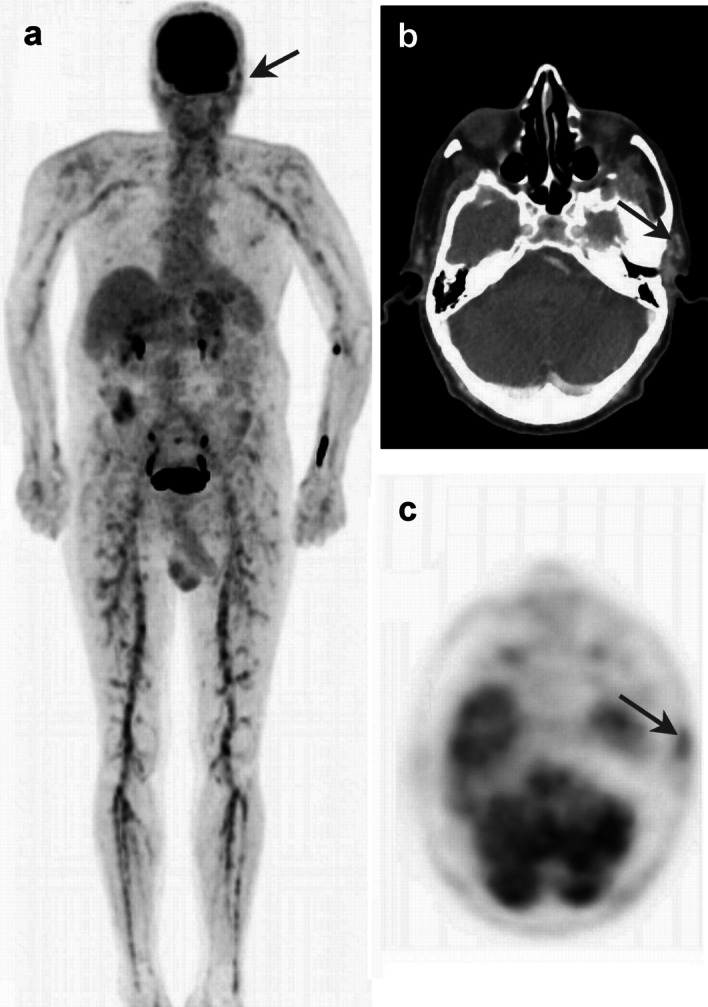PET/CT uncovers cranial giant cell arteritis.
IF 1.7
Q3 RADIOLOGY, NUCLEAR MEDICINE & MEDICAL IMAGING
引用次数: 2
Abstract
Background: Giant cell arteritis (GCA) is an inflammation of large and medium sized vessels, mainly affecting people over 50 years of age. Diagnosis needs to be made quickly to prevent complications. Steroids treatment should be started once diagnosis is made.
Case presentation: Here we reported a case of cranial GCA in a 82-year-old man. [18F]FDG PET/CT imaging demonstrated higher FDG uptake in medium sized and cranial vessels. Glucocorticoid treatment was started, followed by a rapid and marked improvement of symptoms and inflammatory markers.
Conclusions: This case report supports the role of PET/CT hybrid imaging as a useful noninvasive tool in the evaluation of cranial GCA.

PET/CT显示颅内巨细胞动脉炎。
背景:巨细胞动脉炎(Giant cell arteritis, GCA)是一种大中型血管炎症,主要影响50岁以上人群。诊断需要迅速作出,以防止并发症。一旦确诊,应立即开始类固醇治疗。病例介绍:我们在此报告一例82岁男性颅内GCA。[18F]FDG PET/CT成像显示FDG在中等大小和颅血管中摄取较高。开始糖皮质激素治疗,随后症状和炎症标志物迅速明显改善。结论:本病例报告支持PET/CT混合成像作为评估颅骨GCA的有效无创工具的作用。
本文章由计算机程序翻译,如有差异,请以英文原文为准。
求助全文
约1分钟内获得全文
求助全文
来源期刊

European Journal of Hybrid Imaging
Computer Science-Computer Science (miscellaneous)
CiteScore
3.40
自引率
0.00%
发文量
29
审稿时长
17 weeks
 求助内容:
求助内容: 应助结果提醒方式:
应助结果提醒方式:


